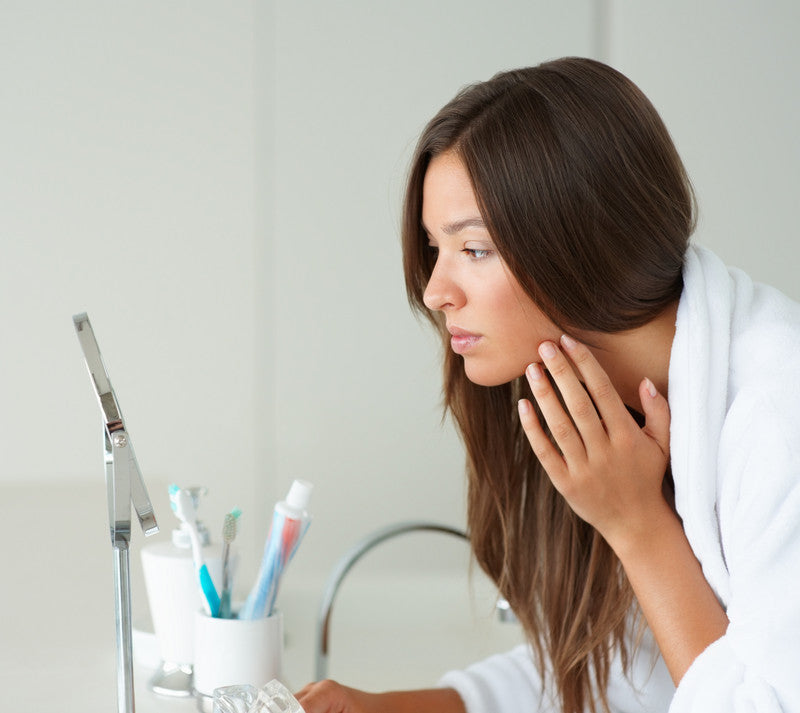Anyone who has ever been diagnosed with Rosacea can tell you that it’s not only a huge inconvenience, but it can also be a source of great dismay. Of course there are things that can be done to manage it, but it is essentially without a cure. People with Rosacea have had to spend their lives managing this condition through diet, stress control and medications lest they experience an episode. These ‘episodes’ leave many sufferers with severe flushing, skin lesions, and in advanced cases, overgrowth of skin. Years have passed with little advancement in Rosacea treatment, until now. More and more, dermatologists and medical professionals are recommending the use of Intense Pulsed Light therapy (IPL) in order to not only control Rosacea, but to render it asymptomatic.

These cells absorb the light, which has transformed to heat, effectively destroying the cell and allowing the body to reabsorb the waste. The unaffected skin remains undamaged, but the affected portions are radically transformed in as little as three sessions.
Imagine a life where your confidence isn’t related to the condition of your skin. Imagine a life where a slight blush on your cheek is just that. If you have been enduring Rosacea, IPL is an amazing opportunity to experience something that actually brings relief. With little down time and no lingering side effects besides a bit of swelling, there is no reason not to consider this revolutionary treatment.

Rosacea: Just the Basics
Rosacea has no known cause, but plenty of known triggers. Believed to be inherited and more prevalent in fair skinned people, flare-ups can occur due to many external and internal factors. Spicy food, alcohol, coffee, stress and strong emotions can all trigger an episode, leaving the sufferers with heavily flushed faces and even painful acne-like bumps that don’t respond to treatment. Incurable, inconvenient, and uncomfortable, suffers have believed for centuries that nothing can be done.How a Couple of Rays of Light Can Help
Originally created for hair removal, IPL therapy has been approved by the FDA since 1995 but is only recently gaining momentum as a Rosacea treatment. In fact, modern dermatologists are beginning to consider it the treatment of choice, beating out the creams and lotions that have been traditionally prescribed by medical practitioners. During the treatment session, the doctor administers pulses of light specifically targeted at the correct frequency to literally dismantle the ruptured hemoglobin cells in the dermis.These cells absorb the light, which has transformed to heat, effectively destroying the cell and allowing the body to reabsorb the waste. The unaffected skin remains undamaged, but the affected portions are radically transformed in as little as three sessions.
Does IPL Really Work?
Currently, dermatologists are recommending three to five sessions of IPL, depending on the severity of the individual’s condition. There are some who may be skeptical about committing to the time and cost that the course of treatment necessitates; however when the hard data is examined, the benefits far outweigh the cost. Recently, a group of Rosacea sufferers underwent five IPL helping scientists to collect data in order to better understand the effectiveness of the process. The results were staggering. The subjects enjoyed an 83 percent decrease in redness, a 75 percent decrease in the amount of flushing and 64 percent experienced fewer breakouts. With those kinds of results, there is no wonder why so many doctors are recommending IPL to their patients.Imagine a life where your confidence isn’t related to the condition of your skin. Imagine a life where a slight blush on your cheek is just that. If you have been enduring Rosacea, IPL is an amazing opportunity to experience something that actually brings relief. With little down time and no lingering side effects besides a bit of swelling, there is no reason not to consider this revolutionary treatment.
No comments:
Post a Comment
Note: only a member of this blog may post a comment.